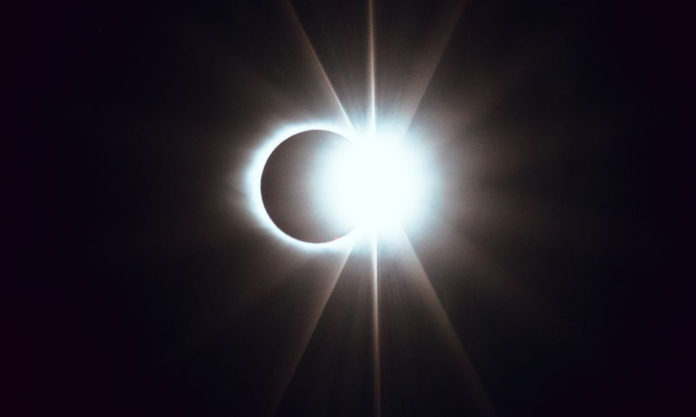The longest day of 2020 shall be marked across much of Asia by an annular solar eclipse. The “Ring of Fire” that is the result shall darken our afternoon skies on Sunday 21 June, making for an exciting end to the weekend for many.
Of the four types of solar eclipse, annular, total, partial and hybrid, the annular is for many the most exciting. With the moon being at apogee, its furthest point from Earth, its disk does not quite cover the sun completely.
Beginning in the Central African Republic, the complete eclipse shall be viewable in Congo, Ethiopia, Pakistan and India, before crossing into China in Tibet, traversing Sichuan, Guizhou, Hunan, Jiangxi and Fujian provinces, concluding in Taiwan and the southwest Pacific Ocean.
Here in Nanjing, we can expect an eclipse magnitude of 0.8. A little after 4pm on Sunday, 21 June, some 80 percent of the sun shall be covered by the moon.
Zhang Min, Director of the Purple Mountain Observatory Science Department, points out that the period of relative darkness provided by the eclipse shall also afford the public the chance to see the eclipse together with the planet Venus, that shall be a little to the west of the sun and moon in the afternoon sky of 21 June, reports The Paper.
The Nanjinger reminds never to look directly at the sun or attempt to view an eclipse with binoculars. Remember those experiments where you burned leaves using a magnifying glass? That’s what will happen to your eyes.
For those without welding goggles, now would be a good time to make an online purchase of some specialty solar eclipse glasses; a snip at about ¥15 per pair.
For families with younger children, this year’s eclipse is also a perfect educational opportunity. The website exploratorium.edu has an excellent guide to making an easy pinhole projector that would keep inquisitive minds busy for a few hours.
According to the website earthsky.org, “Never look at the sun directly without a safe filter in place to protect your eyes. … Do not use sunglasses, polaroid filters, smoked glass, exposed color film, X-ray film, or photographic neutral density filters”.
A solar eclipse occurring on the summer solstice may sound like a staggering coincidence, but that’s not the case. The older of our alert readers may remember one took place in 2001, while our younger readers can look forward to the next two summer solstice solar eclipses, in 2039 and 2058.









